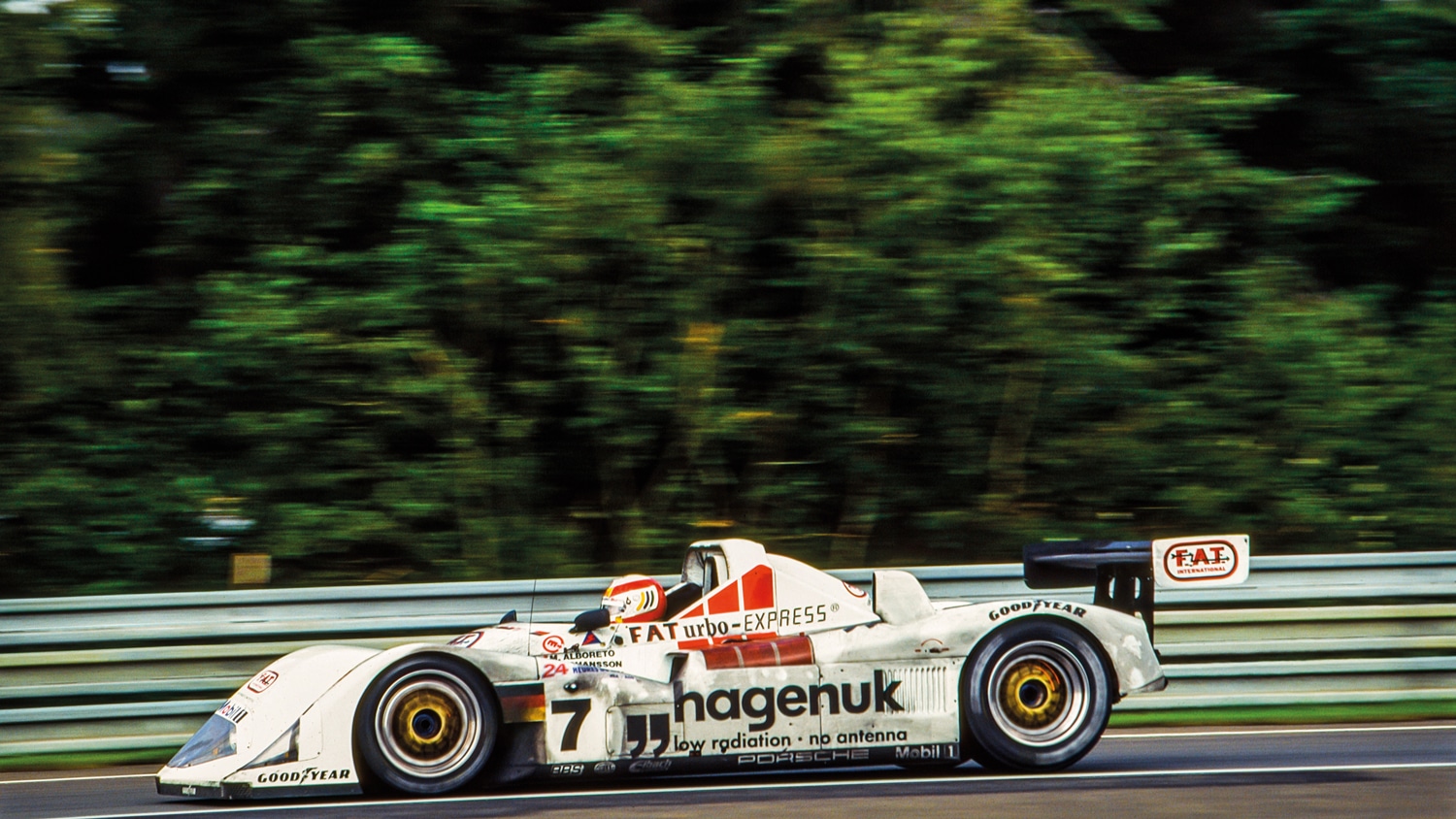Hang on, what make of car is it again?
Gordon Cruickshank tries to keep up with the stop-start story of a TWR-Porsche WSC95 that changed badges like it changed tyres

It was a Jaguar, then a TWR-Porsche; when this 1997 image was snapped it was a Joest ‘privateer’.
DPPI
You could hardly have a more confusing history than this chassis, with its roots in a Jaguar sports-racer which then carried the Stuttgart crest to victory in three races, two of them being Le Mans. And that was after being abandoned and set aside for a year following completion.
Serge Vanbockryck has a record with Porsche books, previously publishing Ultimate works on 956 and 962, both prolific products of the marque. This one though, is perhaps Porsche’s unicorn – a fabled beast of mystery origins rarely seen in the flesh. Those origins are explained here, essentially the search for an IMSA entry to keep TWR’s North American racing team in action. In 1995 Porsche had a bothersome gap in sports-prototype racing before its radical GT1 would be ready, while TWR’s Tony Dowe needed an entry for the American series to carry on from the massive V12 XJR-12 and costly-to-run Jaguar XJR-14 with its F1 technology. Porsche USA’s Alwin Springer recalls that in essence they had a great engine – the 962’s near-unburstable flat-six turbo – with an ageing chassis while TWR had a good chassis in search of power. A mutual proposal was accepted. Much re-engineering later, chassis and engine were bedded down together.

Right, from left: Michele Alboreto, Tom Kristensen and Stefan Johansson – Joest’s 1997 Le Mans winners
DPPI
Vanbockryck has spoken to all the figures he can from Porsche Motorsport chief Norbert Singer to the drivers who wielded this complex device, so there is much inside detail on what had to be done to turn what had been a coupé with phenomenal downforce and F1-style stressed engine into a spider with one third of the aero and an unstressed motor. It was so much more than the engine swap. Then IMSA slammed a throttling order on turbos, hobbling the new WSC95; within 48 hours Porsche withdrew its entry and dust covers went on. IMSA’s senior director of race operations Mark Raffauf is able here to explain the political quandary it faced that led to that decision.
It was the indefatigable Reinhold Joest who revived the project, proposing to complete development and enter chassis 001 plus a new sister car at Le Mans as a support act for the forthcoming 1996 GT1 car – no simple task, as the author explains. Engine: great; chassis: excellent; aerodynamics: all wrong. Norbert Singer reckons if they had known what a struggle that element would be they wouldn’t have started. Still, there would be no complaints when this crossbreed finally prevailed at La Sarthe over the works cars – and repeated the feat a year later, as well as victory at Donington Park. After which Norbert Singer calculated that he could gain more ground with a revised WSC95 than he could with the GT1, inevitably compromised by its (tenuous) road car origins, and derived the works LMP1-98 from the same foundation, again run by Joest though this time without success. Those many changes are described and illustrated, including the much altered bodywork that made it look like a different car. Nor was that the end; Joest revised it yet again for Petit Le Mans, scoring a second.
Needless to say photos and illustrations abound in this hefty 320-page book, including some nice artwork showing successive stages of the car’s development and livery and a gallery of chassis 001 today. Amplifying the author’s many interviews with main actors are extracts from minutes, correspondence, and exhaustive data from every test and race down to engine test diagrams, gear ratios and lap times. It’s a bit of a monster to tackle – maybe we didn’t need such detailed biographies of all the drivers – but as the first full book on this significant brick in Porsche’s broad and high wall of success it’s impressively comprehensive, and for once not costly.

TWR-Porsche WSC95 – The Autobiography of WSC OO1
Serge Vanbockryck
Porter Press, £69
ISBN 9781907085536
